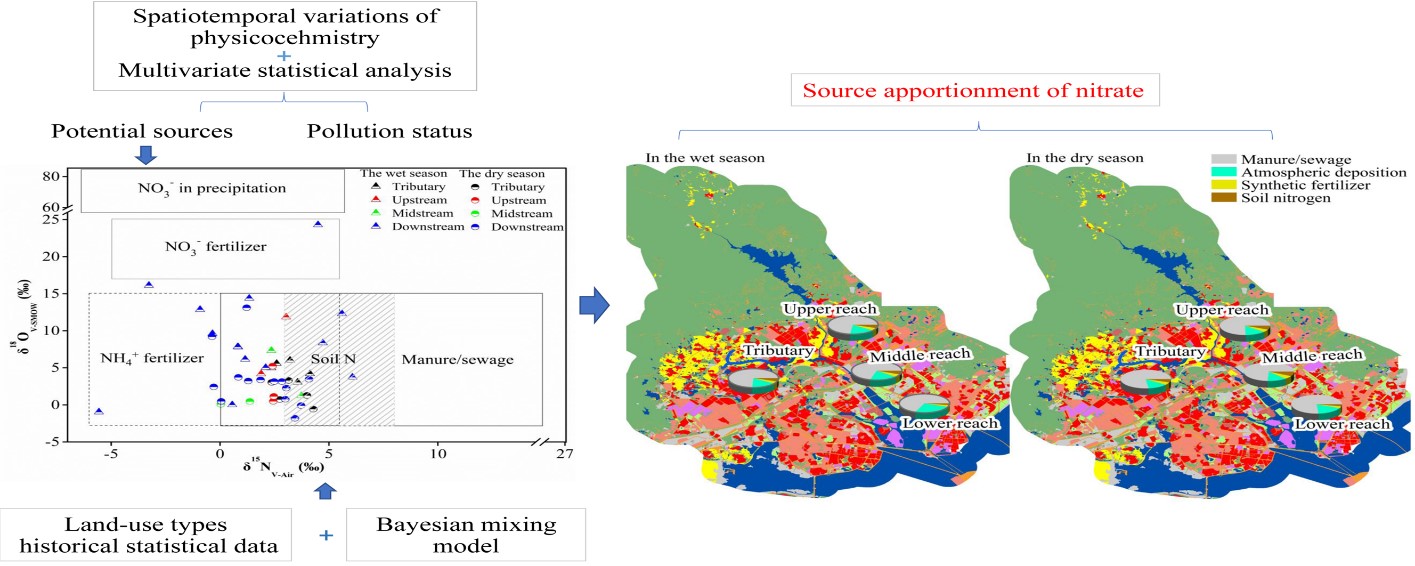Nitrate (NO3-) pollution in water-body is mainly caused by intensive human activities and land use conversion, which has become a common environmental problem in peri-urban areas. Elevated NO3- concentrations in water bodies, especially in coastal and marine environments, cause eutrophication, harmful algal blooms, and hypoxia, ultimately resulting in a series of harmful knock-on effects. Therefore, in order to ensure the safety of water quality, effective measures must be taken to reduce the input of excessive nitrogen. The accurate identification of the main NO3- contributors and its transformations are critical prerequisite for efficient water quality management.
Based on the above background, YAN Changzhou's group from the Institute of Urban Environment of the Chinese Academy of Sciences took Jimei Lake Watershed in Xiamen City as the research area, and analyzed the sources of nitrate pollution by using hydrogeochemical indicators and dual isotopes of nitrate (δ15N and δ18O). Jimei Lake watershed in southeast China is an important coastal area with municipal water supply, landscape water, agricultural irrigation and flood control functions. As a typical peri-urbanized area, Jimei Lake watershed is disturbed by intensive human activities. As a result, Jimei Lake is beset by serious eutrophication. The problem of water environment security in the research area has attracted extensive attention. The results of principal component analysis of hydrogeochemical parameters demonstrated that the Jimei Lake was seriously polluted by nutrients, especially in the southeast of the downstream. There were signs of seawater intrusion and increased wastewater discharge in the mid-lower reaches with high ammonium concentrations. Nitrification occurred throughout the monitoring period with lower δ15N and δ18O values and NO3- derived from mixed pollution sources. Results of Bayesian model showed that dominant NO3- input originated from manure and sewage (M&S, 71% and 76% in the wet and dry season, respectively) and atmospheric deposition (22% and 16%, respectively). Controlling and treating the M&S discharge are essential to alleviate NO3- pollution in Jimei Lake Watershed. The proposed method is helpful to understand the origins of NO3- and may be suitable to develop measures for the reducing of nitrogen loadings in the peri-urban watershed.
The research titled Quantitative identification of nitrate sources in a coastal peri-urban watershed using hydrogeochemical indicators and dual isotopes together with the statistical approaches, was published on the journal of Chemosphere. This project was funded by the Strategic Priority Research Program of the Chinese Academy of Sciences and the National Natural Science Foundation of China.

Graphical abstract